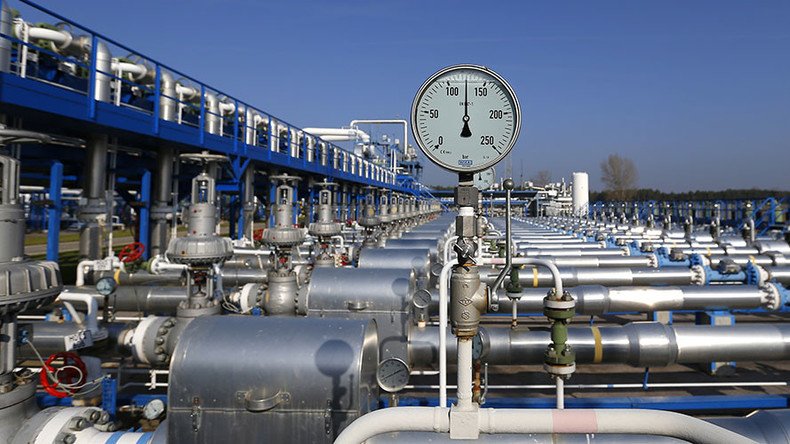Company behind LA’s ‘mini-Chernobyl’ methane leak sued by California air regulator

The gas company behind the “mini-Chernobyl” methane leak in California is facing a $25 million lawsuit from the state’s air regulator seeking penalties for “each and every day” of the biggest natural gas leak in US history.
Based on six alleged violations, the South Coast Air Quality Management District (SCAQMD) is asking for up to $440,000 per day from the Southern California Gas Co. in compensation for the damage caused by the Los Angeles County leak, which has been ongoing since at least October 23, when it was first reported.
The months-long leakage from an underground gas storage reservoir in Aliso Canyon has emitted critical amounts of methane, leading to the evacuation of over 4,000 families in the northwest San Fernando Valley. The incident also triggered the declaration of a state of emergency by California Governor Jerry Brown on January 6.
BREAKING: State of emergency declared over huge Los Angeles County methane leak
https://t.co/2jucMZdXxr
— RT America (@RT_America) January 6, 2016According to January 19 estimates by the Environmental Defense Fund, SoCal’s Aliso Canyon storage field has leaked 62 million cubic feet of methane into the air daily since the end of October.
“Natural gas in its pure state is mostly methane. The natural gas leaking from Well 12 SS-25 contains tetra-butyl mercaptan and tetrahydrothiophene. These are odorants that produce 13 highly offensive rotten-egg odors,” the SCAQMD said in the lawsuit, while stressing the health effects of short-term exposure to the chemicals.
The regulator has claimed it has received “over 2,000 odor complaints” from residents and people working in a close proximity to SoCal’s facility in nearby Porter Ranch.
“If people had stayed in their homes and students had remained in their schools, they would have continued to suffer significant or substantial injuries from odors from the leaking gas,” the plaintiff alleged.
The SCAQMD is also accusing SoCalGas of contributing to global warming by emitting 12 billion cubic feet of methane into the atmosphere.
“SoCalGas’ methane leak from Well SS-25 has increased the risk of harm in the future from global warming,” it stressed, citing the United States Environmental Protection Agency’s “standard,” which puts the Global Warming Potential for methane “between 28 and 36 over a 100-year period.” Carbon dioxide, on the other hand, is listed at 1.
California methane leak: Regulators delay 'capture and burn' vote
https://t.co/0JYwP0GVVgpic.twitter.com/g6v4SJCqgV
— RT America (@RT_America) January 18, 2016On January 18, SoCal announced that its expects to stop the Aliso Canyon natural gas leak by late February or sooner, since its relief well project is proceeding ahead of schedule.
The following weekend, the SCAQMD ordered the company to “shut down the dangerous Aliso Canyon” well, establish a leak detection system, and conduct an independent health study.
In a 4-1 vote, the regulator approved new requirements for SoCal, which includes a total of 10 demands.
Representative Brad Sherman said on Wednesday that “SoCalGas is now committed to capping, sealing and killing the 18 other 1950s (era) vintage wells that are up there.”
“It’s a first step toward either closing the whole facility down, or making the facility safe. It’s a first step toward either of those two outcomes,” Sherman said in an interview, according to Los Angeles Daily News.
'This is a mini-Chernobyl': LA County supervisor on California methane leak
https://t.co/3bfLKa4e1opic.twitter.com/5bgspzf1e2
— RT (@RT_com) January 13, 2016The California Department of Conservation said SoCal has identified 18 wells “it will temporary plug with completion fluid by setting tubing plugs,” the newspaper added.
“Further actions on these and other wells in this facility will be determined after a comprehensive well by well review by the Division of Oil, Gas and Geothermal Resources has been completed,” said Don Drysdale of the state’s Department of Conservation.
Commenting on the severity of the environmental disaster earlier in January, Mike Antonovich, a Los Angeles County supervisor, called the leak a “mini-Chernobyl” in a reference to the 1986 explosion at the Chernobyl Nuclear Power Plant in Ukraine, which is considered to have been the worst nuclear power plant accident in history.












